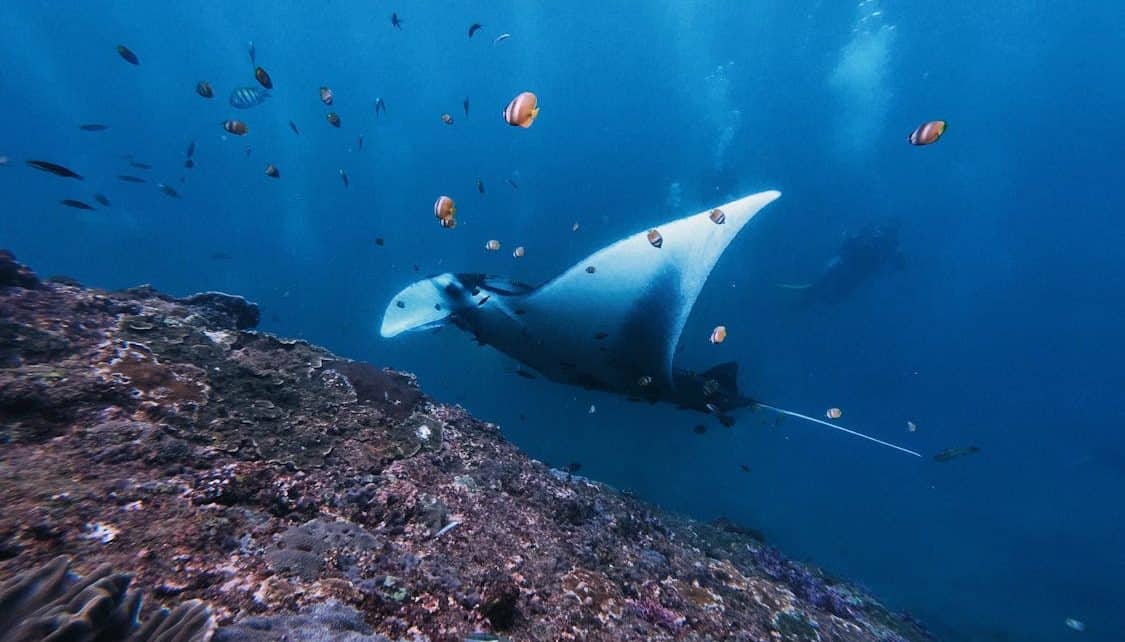Manta rays draw attention with graceful wing like motions that seem to belong to a different world beneath the blue. A modest plan that mixes timing, local knowledge and light gear can cut costs without shrinking the quality of the encounter.
Small choices add up; booking early or late, packing the right items, and knowing where to look will save money and time in equal measure. The aim here is simple and friendly guidance so you get more close up time and fewer extra charges.
1. Choose Off Peak Months
Manta presence often follows plankton blooms and seasonal currents, so aim for months when fewer visitors arrive and operators lower prices to fill boats. Travel demand drops in certain stretches of the year, and airfares plus room rates reflect that shift, offering clear chances to save if your schedule bends a bit.
Booking flights and lodging with a few flexible date options gives you leverage to catch lower fares, and airports will often show a range of fares if you search for booking windows rather than single days. Shifting a trip by a handful of days can shave large percentages off the total bill while keeping the water warm and the show on.
Many island spots have high season spikes that push rates up and create crowded decks on popular boats, so plan for the quieter weeks when local guides still run regular sailings.
A morning or night slot outside the busiest weeks will often give better views and more relaxed boat time, and operators may add bonuses like free photos or extra swim time to lure guests.
Locals know the rhythm of the sea and can tell you which weeks see steady mantas without the full price tag, which is a practical tip that pays off. A small tweak in timing yields a calmer horizon and a smaller hit to the wallet.
2. Book Local Guided Trips
Smaller, locally run outfits tend to have lean cost structures and will often pass savings to passengers while still maintaining solid safety standards and local knowledge.
Look for crews with clear permits and steady review trails, and use direct chat or email to ask about exact inclusions so you avoid surprise fees that happen when a big brochure hides extras.
If you’re looking for a memorable ocean experience, consider joining a manta ray night snorkel for an unforgettable encounter with these gentle giants.
Booking locally can also reveal flexible options like shared charters, discounted second day rates, or combined snorkel swims that big companies either skip or mark up heavily. When you see familiar names for guides and a steady stream of community feedback, you have a clearer sense of value than a polished online page alone can give.
Try to book seats instead of full private charters when possible, or join forces with other travelers to split a private boat and cut the per person outlay significantly. On the ground bargaining with a smile often works better than prepaying online at premium prices, and direct cash payments sometimes lower the price when operators avoid card fees and platform commissions.
Local teams are often happy to include small extras like a shared camera clip or quick photo edit if you help them fill seats, which turns a standard trip into more value for less money. A friendly approach and a little local knowledge will help you lock in fair deals that feel good for both sides.
3. Pack Smart And Light

Quality basic gear that fits you well beats cheap rentals that pinch or fog, since comfort in the water often translates to longer swims and better sightings and that is priceless when a manta glides by.
Bring items that are expensive or hard to find in remote spots, like reef safe sunscreen, mask anti fog spray, or a reliable dry bag, because buying replacements on the spot can be shockingly dear and slow you down.
Compact multi use items work best; a small camera that shoots well in auto mode lets you capture scenes without paying heavy rental fees or learning complex controls in a single day. Booking with less luggage also reduces checked bag fees and speeds transfers, so you arrive at the boat with less hassle and more energy.
Think repair kit basics and spares for small parts that tend to break at sea, since a quick strap fix often saves a full day of cancelled plans and extra rental costs later on. A thin travel towel, a light rash guard, and a pair of comfortable fins that fold into your bag will cover many needs without bulk, and these pieces will keep you ready for both midday swims and windy transfers.
Packing light feeds into cheaper local transport choices because you can hop on a bus or shared shuttle without paying extra for oversized bags, which keeps daily costs down. Smart packing is a low tech trick but it compounds in cash saved and time recovered.
4. Use Public Transport And Shared Rides
Local ferries, scheduled boats and public buses carry a lot of passengers at set fares and often beat private transfers when you line up your connections ahead of time. Timetables at harbors or central markets show the pulse of local travel, and matching your trip legs to those windows can cut transfer fees while keeping your itinerary realistic and relaxed.
Shared vans and community shuttles are common on island circuits and split costs evenly if you travel with a small group, which makes far flung manta spots reachable on a modest budget. Ask guesthouses for local driver contacts who charge local rates rather than taking the fixed hotel transfer and you will likely save a tidy sum.
When schedules are tight, night sailings or overnight buses can be a low cost way to move between points and shave one night of accommodation off your expenses if you can sleep on board. Carry a small torch, a light layer and a flexible frame of mind because local connections sometimes shift and an easygoing attitude keeps stress low and the trip enjoyable.
If you do share a hire, agree on fuel and toll splits up front and keep receipts so the math is clear and friendly rather than awkward later on. A little give and take and solid planning will keep your travel spend modest and the spirits high.
5. Scout Free Or Low Cost Viewing Spots
Mantas visit cleaning stations and shallow passes where you can sometimes watch from shore or a short swim without paying steep boat fees, so ask quietly at friendly cafes or with fishers who know the local reef and will often point you to safe vantage points.
An early morning walk along the reef edge or a calm evening paddle in a rented kayak can reveal mantas making their rounds before commercial trips head out, and these moments often feel intimate and unhurried.
Bring a modest snorkel kit if you have one, stay still and quiet, and you will often find that animals approach on their own terms rather than being guided all the time. Shore side sightings are a classic way to mix low cost and high impact memory.
Volunteer events run by conservation groups sometimes include guided swims or talks at a low fee that supports local work and gives you insider knowledge on where mantas like to glide and feed. Small donations and respectful behavior build goodwill with communities and operators, which may open doors to low cost local tips and trusted guides who will share lesser known spots.
Keep to marked paths and respect marine rules since protecting access helps keep those free spots open for visitors and locals alike. Slow patient observation of patterns yields results, and an attentive eye will spot the signs of a nearby manta without spending a cent.





